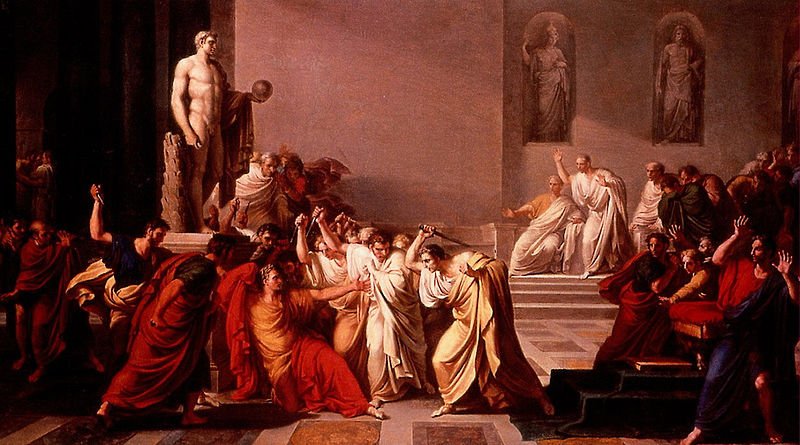Once again. We know that Antares rose with the Sun in November 25 (329) - according to my suggested epoch for rongorongo - and that according to the epoch of the Eye the Bull (Ain,'Bull's Eye', ε Tauri) this day would have marked autumn equinox 181 days after Aldebaran had been at spring equinox in MARCH 25:
I.e., 64 precessional days earlier than in November 25 (329) Antares would have risen together with the Sun in SEPTEMBER 22 (265 = 329 - 64). In 1752 A.D. the Julian calendar (the Old Style) would have had day 245 (2 September) 11 days too early in the year, at least according to the calendar of the Pope Gregory XIII (the New Style), where this place was day 245 + 11 = 256 (September 13). ... When Julius Caesar established his calendar in 45 BC he set March 25 as the spring equinox. Since a Julian year (365.25 days) is slightly longer than an actual year the calendar drifted with respect to the equinox, such that the equinox was occurring on about 21 March in AD 300 and by AD 1500 it had reached 11 March. This drift induced Pope Gregory XIII to create a modern Gregorian calendar. The Pope wanted to restore the edicts concerning the date of Easter of the Council of Nicaea of AD 325. (Incidentally, the date of Easter itself is fixed by an approximation of lunar cycles used in the Hebraic calendar, but according to the historian Bede the English name 'Easter' comes from a pagan celebration by the Germanic tribes of the vernal - spring - equinox.) So the shift in the date of the equinox that occurred between the 4th and the 16th centuries was annulled with the Gregorian calendar, but nothing was done for the first four centuries of the Julian calendar. The days of 29 February of the years AD 100, AD 200, AD 300, and the day created by the irregular application of leap years between the assassination of Caesar and the decree of Augustus re-arranging the calendar in AD 8, remained in effect. This moved the equinox four days earlier than in Caesar's time ... ... These '4 unneccessary leap days' (prior to the Council of Nicaea) were approximately equal in number to the precessional distance in time between the Pope and the time of rongorongo. The Gregorian calendar could therefore be easily understood by the Easter Islanders. The Pope had created a 'crooked calendar' but since his time the precession had fixed it. ... Looking forward, Taetagaloa is right, the canoe is crooked. He slices through all the lashings of the canoe to straighten the timbers. He realigns the timbers. First he must again position the supports, then place the timbers correctly in them, but Kuikava the son of Likāvaka goes over and stands upon one support. His father Likāvaka rushes right over and strikes his son Kuikava with his adze. Thus Kuikava dies. Taetagaloa goes over at once and brings the son of Likāvaka, Kuikava, back to life. Then he again aligns the supports correctly and helps Likāvaka in building the canoe. Working working it is finished ... From there (2 September = September 13) to "October 15 (288) according to the epoch of the cardinal star Bharani - corresponding to the realigned Gregorian 'timber' November 25 (288 + 41) when Antares rose heliacally according to the observations on Easter Island (who surely would have known when Easter should be celebrated) - there were 32 right ascension days:
... The first of all foreign visitors on Easter Island was the Dutch admiral Jacob Roggeveen., who approached the island in the evening twilight of Easter Sunday, 1722. As the sun rose above the sea next morning the Dutchmen brought their ships close inshore and observed a mixed crowd of fair-skinned and dark-skinned people who had lit fires before some enormous statues standing in a row. The people ashore were squatting in front of the statues, with their heads bent while they alternatively raised and lowered their arms. When the sun rose they prostrated themselves on the ground facing the sunrise, their fires still flickering before the stone colossi. The statues were even then so old and eroded that Roggeveen could with his bare fingers break pieces away from the decomposed surface, wherefore he concluded that the giant figures were simply molded from clay and soil mixed with pebbles. The Dutchmen left the island after a single day's visit ... When changing the calendar to the New Style Wednesday (the day of Mercury) was followed by Thursday (the day of Jupiter) 11 days later. Once again the week days could not be changed (no one would have accepted that). ... Wednesday, 2 September 1752, was followed by Thursday, 14 September 1752 ... ... The Julian calendar day Thursday, 4 October 1582 was followed by the first day of the Gregorian calendar, Friday, 15 October 1582 (the cycle of weekdays was not affected) ... For the planets of the week carried essential information and ruled the human societies (but not the raw brutes outside). ... Russian odin (as in Wooden, the Nordic name for Mercury - as in Wednesday, French: Mercredi) means one (1) ...  ... It happens that we know the Norse name of Gwydion's horse, if Gwydion was indeed Woden, or Odin. It was Askr Yggr-drasill, or Ygdrasill, 'the ash-tree that is the horse of Yggr', Yggr being one of Woden's titles. Ygdrasill was the enchanted ash, sacred to Woden, whose roots and branches in Scandinavian mythology extended through the Universe ...
Hiro. 1. A deity invoked when praying for rain (meaning uncertain). 2. To twine tree fibres (hauhau, mahute) into strings or ropes. Ohirohiro, waterspout (more exactly pú ohirohiro), a column of water which rises spinning on itself. Vanaga. To spin, to twist. P Mgv.: hiro, iro, to make a cord or line in the native manner by twisting on the thigh. Mq.: fió, hió, to spin, to twist, to twine. Ta.: hiro, to twist. This differs essentially from the in-and-out movement involved in hiri 2, for here the movement is that of rolling on the axis of length, the result is that of spinning. Starting with the coir fiber, the first operation is to roll (hiro) by the palm of the hand upon the thigh, which lies coveniently exposed in the crosslegged sedentary posture, two or three threads into a cord; next to plait (hiri) three or other odd number of such cords into sennit. Hirohiro, to mix, to blend, to dissolve, to infuse, to inject, to season, to streak with several colors; hirohiro ei paatai, to salt. Hirohiroa, to mingle; hirohiroa ei vai, diluted with water. Churchill. Ta.: Hiro, to exaggerate. Ha.: hilohilo, to lengthen a speech by mentioning little circumstances, to make nice oratorial language. Churchill. Whiro 'Steals-off-and-hides'; also [in addition to the name of Mercury] the universal name for the 'dark of the Moon' or the first day of the lunar month; also the deity of sneak thieves and rascals. Makemson.
A piece of the Fire (the Sun) was stolen and brought down to Mother Earth by Mercury, the planet closest to the Sun (the Fire), for Mercury was in close contact also with Mother Earth:
When a piece of the 'fire' (= 365 - 364) was stolen it should have implied that the line for 0h, and thus also the lines (timbers) for all the other right ascension days, had to be relocated (realigned). ... Ecclesiastically, the equinox is reckoned to be on 21 March (even though the equinox occurs, astronomically speaking, on 20 March [*364] in most years) ... For instance could Vega have been repositioned by 11 'stolen days' from day 350 (16 December) to day 361 (December 27). As to the day for the birth of the New Style in September 14 this date
was probably chosen because it was at the other side of the year compared to March 14 (3-14). Changes must be dictated by π and by Mercury.
The New Style was born at π Scorpii (Vrischika):
Day 6 * 29½ = 177 (= 354 / 2) was at SEPTEMBER 14 and in the previous day was the last night according to the Old Style:
The Old Style must in a way have ruled already before the reforms of Julius Caesar: ... The Romans made much about it [Vega], for the beginning of their autumn was indicated by its morning setting. It was this star that, when the hour of its rising was alluded to, called forth Cicero's remark, 'Yes, if the edict allows it,' - a contemptous reference to Caesar's arbitrary, yet sensible, interference with the course of ancient time in the reformation of the calendar, an interference that occasioned as much dissatisfaction in his day as did Pope Gregory's reform¹ in the 16th century. ¹ The English refused to adopt this reform till 1752, when they abandoned the Old Style on the 2d of September, and made the succeeding day September 14th, New Style: a change, however, that 'was made under very great opposition, and there were violent riots in consequence in different parts of the country, especially in Bristol, where several persons were killed. The cry of the populace was 'Give us back our fortnight', for they supposed they had been robbed of eleven days ... Such an outrageous behaviour must of course be retaliated: ... The brutes of spring caused the downfall of both Captain Cook and Julius Caesar. We are close to the key myth of mankind, that which explains the regeneration of sun and of growth. Once at least some people kept the tradition living. I became interested in what really happened at March 15 and reopened Henrikson to find out: Caesar was forewarned of the threat by the prophet Spurinna, who told him that a great threat was coming at Idus Martiae or just before [i.e. at 3-14]. The day arrived and Caesar was still living. He was walking to his meeting with the Senate when he happened to encounter Spurinna and told him jokingly that he was still alive. Spurinna calmely answered that the day had yet not ended. The Romans divided their months in two parts and the dividing point was Idus, which in some way was connected with full moon. March 15 was the midpoint of March, which is close to spring equinox. The old agricultural year defined the beginning of the year to the time when sun returned, and it was connected with Mars ... ... The chaotic tumult in the Curia (where the Senate had their meeting and where they killed Caesar) resulted in his dead body being left lying on the floor, while all the Senators panicked and ran out through the doors in different directions. They had planned to throw his body into the river, but the time of plans and order was in the past. Instead, in the afternoon, three of the slaves of Caesar came and fetched his body, and carried him on a stretcher to his home south of Forum - and one arm was hanging down in the corner where the 4th slave should have been ...
|
||||||||||||||||||||||||||||||||||||||||||||||||||||||||||||||||||||||||||||||||||||||||||||||||||||||||||||||||||||||||||||||||






.jpg)
